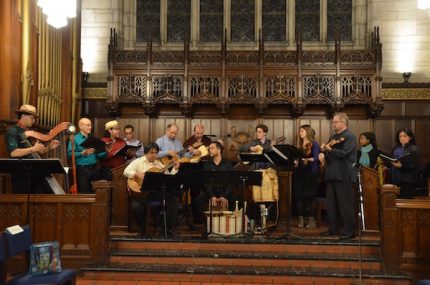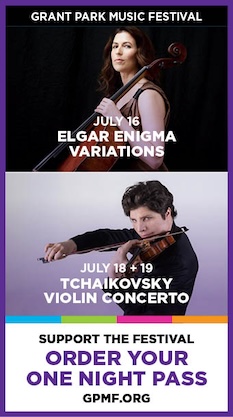Newberry Consort’s lively “Mexican Christmas” warms up a chilly night

The Newberry Consort brought a little Mexican warmth to a cold Chicago night with its annual concert “Mexican Christmas” program Friday night at St. Luke’s Episcopal Church in Evanston.
Now in its 35th season, Chicago’s longest-running early music ensemble presented a program inspired by descriptions of 17th-century Mexican convents, where people would gather outside the cloister walls to hear the musically accomplished nuns sing, while villancico bands played outside the convent gates.
These bands, made up of traditional musicians playing folk instruments, would play to celebrate the novitiate leaving the secular world to enter life as a nun. The result is a stark stylistic contrast between the solemn, heady polyphony inside the convent and the raucous sounds outside on the plaza.
The Newberry Consort cleverly achieved this effect by having two ensembles: a convent ensemble (The Newberry Consort) and a villancico ensemble (featuring musicians from EnsAmble Ad-Hoc). The convent ensemble, consisting of female voices and a handful of continuo instruments, was tactfully obscured in the darkened choir stalls behind a screen onto which texts and translations were projected, while the villancico ensemble, dressed in vibrant colors, played and sang in front of the screen.
This contrast was especially effective in the theatrical opening.The instrumentalists came out to tune, but this devolved into a lively folk music introduction, with the singers of the villancico ensemble singing as they came up from the back of the church and more joining from the pews, making the audience a de facto part of the village cohort. Once the villancico singers reached the front of the church, strains of plainchant from the convent ensemble broke through the texture. The villancico band looked back in mock confusion, giving way to Juan Gutiérrez de Padilla’s “Christus natus est nobis,” which mixed plainchant verses with polyphonic refrains.
The unison of the “nuns” in this spine-tingling moment was impeccable, and the plainchant well-paced. Throughout the program, the singers of the convent ensemble, under the leadership of renowned early music soprano and co-director of the Newberry Consort Ellen Hargis, sang with a beautiful, laser-focused tone that rang gloriously in the neogothic church. However, there were times when that tone got a bit pressed and landed under the pitch, particularly in the first sopranos. In addition, some of the tempo changes within pieces could have been cleaner and more assured.
The most impressive piece among the convent selections was José de Cáseda’s “Qué música divina.” The text praised music’s infinite power to move the human soul; consequently, there were numerous moments of clever text painting, such as the chromatically rising melody and delicious dissonances on the text “it elevates the senses and makes us swoon.” This piece also had several impressive soloistic opportunities, for which it would have been nice to see the singers.
The convent ensemble’s offerings were alternated with villancicos from the band in the plaza. As directors of EnsAmble Ad-Hoc Francy Acosta and José Luis Posada explain, these celebratory songs “reflect the blend of Spanish and African elements during colonial times in Mexico.” Many of the songs are structured as entertaining dialogues between bucolic characters, including one humorous line about bringing a talking parrot as a gift for the baby Jesus. They also often contain elements of dance, making them nice foils to the esoteric sacred music.
The singers of EnsAmble Ad-Hoc were joined by a collection of traditional percussion instruments and descendants of the Spanish guitar. It would have been nice to have had a better balance of male to female voices in the group, but tenor Matthew Dean’s present and stylistically flexible voice provided a firm grounding. Another vocal standout of the villancico cohort was soprano Carolina Gómez, who gave an affecting solo in Padilla’s tender lullaby-like song, “Si al nacer, o miniño.”
The two groups joined forces for the final piece on the program, Juan García de Zéspedes’ “Convidando está la noche,” with the nuns emerging from their cloister to join in the festivities. The combined sound of the two groups was invigorating, even if it took some effort to get the audience to clap along with the music in the chilly nave.
Newberry Consort’s “A Mexican Christmas” will be repeated 3 p.m. Sunday at Mother of the Americas Parish in Chicago. newberryconsort.org
Posted in Performances


